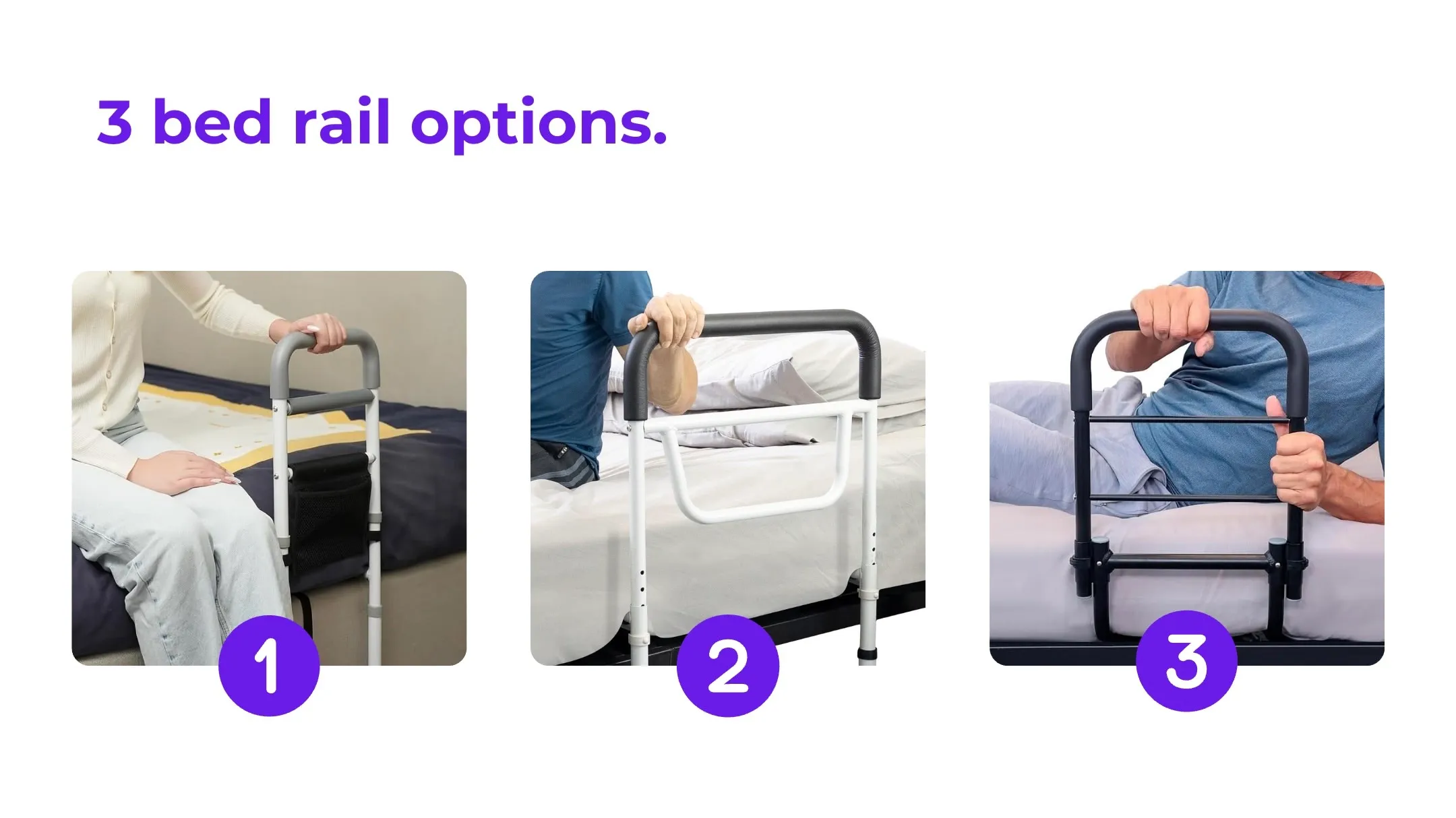Bed Rails for People with Dementia


168 | Bed Rails for People with Dementia
Would your person living with dementia benefit from a bed rail? Maybe! But, first we need to talk about the risks of bed rails and the cases in which we would not want to use a bed rail for someone living with dementia.
Potential risks of bed rails:
- Entrapment
- Strangulation and asphyxiation
- Injuries from falls due to climbing over rails
- Tripping on feet of bed rails
- Skin cuts, scrapes, and bruises
- Increased agitation
Did you know that more than 50% of bed rail accidents reported to the FDA have resulted in the death of the patient? Not good!
For this reason and more, bed rails should never be used as restraints. For example, if a person is trying to get out of bed at night, implementing a bed rail is not a safe solution. Imagine if it were you in this situation. What would you do? You would probably find a way to get onto the other side of it, wouldn't you? The same goes for people living with dementia. Everyone has their reasons for wanting to get up and out of bed and a bed rail just creates an unsafe barrier in these situations.
So, what's the purpose of a bed rail then? Well, there is one primary function of a bed rail — to improve a person's bed mobility and minimize risk for falls when getting in or out of bed.
The individual would utilize the bed rail not only to transition from lying down to sitting up but also for support while returning to a lying position and getting back into bed. Additionally, they would use the sturdy handle for support while standing up from the bed.
This is the safest and most functional use of a bed rail.
Now, you will see people recommend bed rails to prevent rolling out of bed and that can definitely be a use case, but we still have to be concerned about entrapment and injury. Therefore, I only recommend bed rails for this purpose if the person is going to be supervised. If the person won't have supervision, bed bumpers could be a safer choice to mitigate the risk of them rolling out of bed, particularly if they are still mobile and prone to getting out of bed unsupervised during the night or even during daytime naps.
Now, let's take a look at 3 good bed rail options. Now, even though these are all technically good options, the best bed rail will be the one that provides your partner with the most stability, but doesn't impede normal movement and how they normally get out of bed. Please also consider whether bed rails with feet could pose a tripping hazard for your partner.

What do you notice? Each of these bed rails offers diverse heights, shapes, widths, and styles to cater to varying needs and bed configurations, while ensuring they do not hinder a person's bed mobility or function. I encourage you to check out each bed rail link and read the descriptions to see which bed rail option may be a good fit for your partner and the type of bed they have. Feel free to explore other bed rail options you see in the related areas as well.
Please note: The above links are affiliate links and Bambu Care may earn a commission from purchases made through them.
Leave us a review.
We love hearing from you.
Every review helps us reach and help more caregivers like you.


